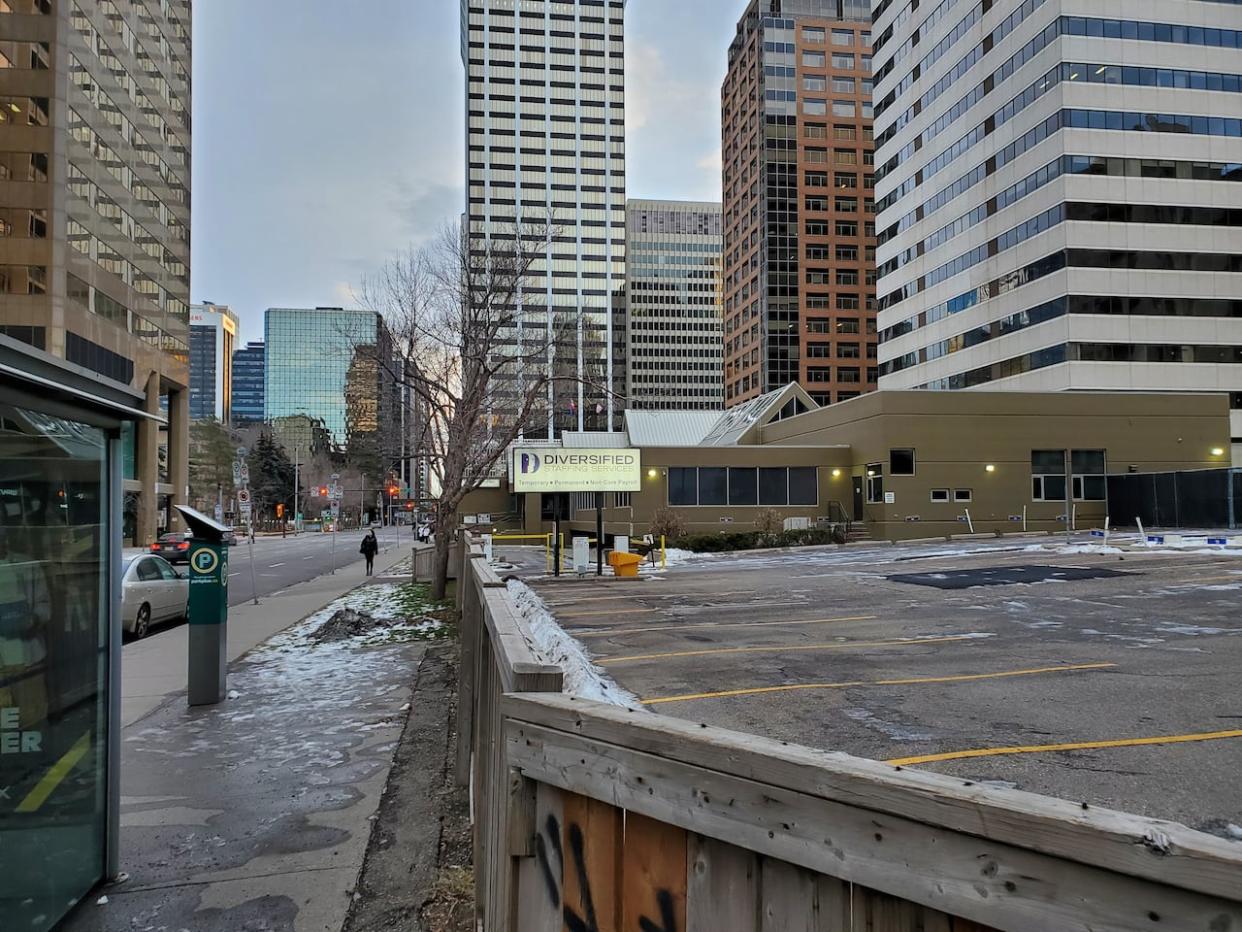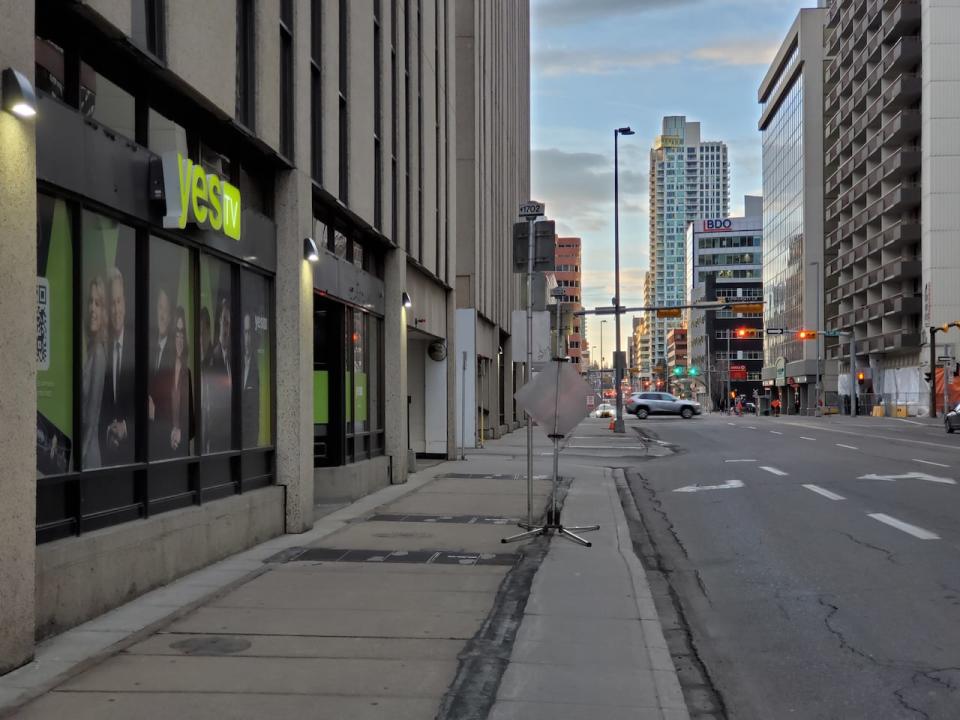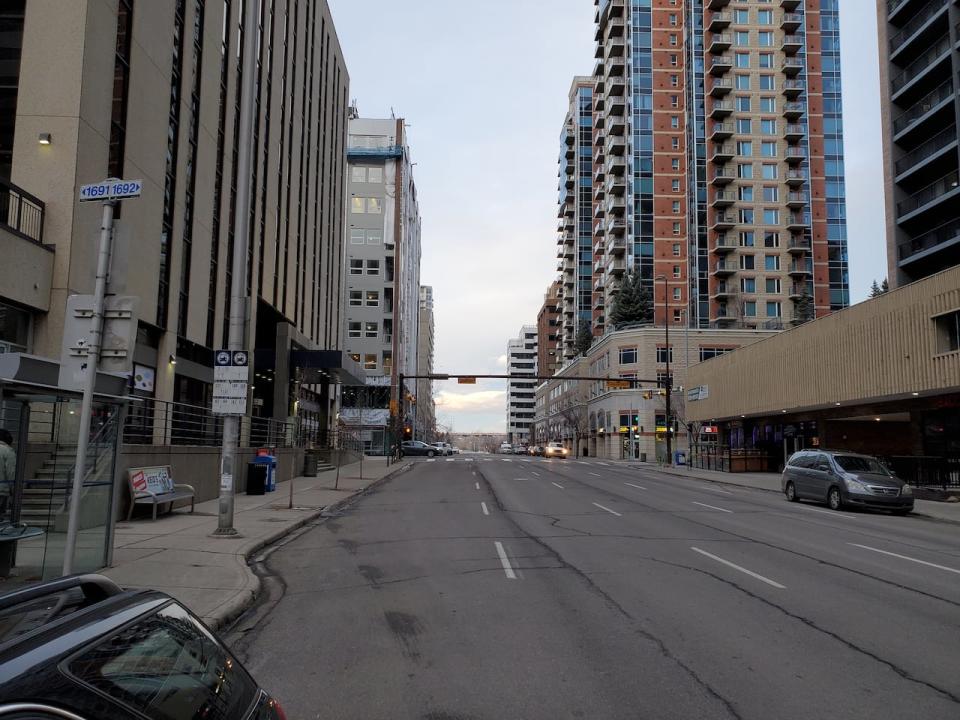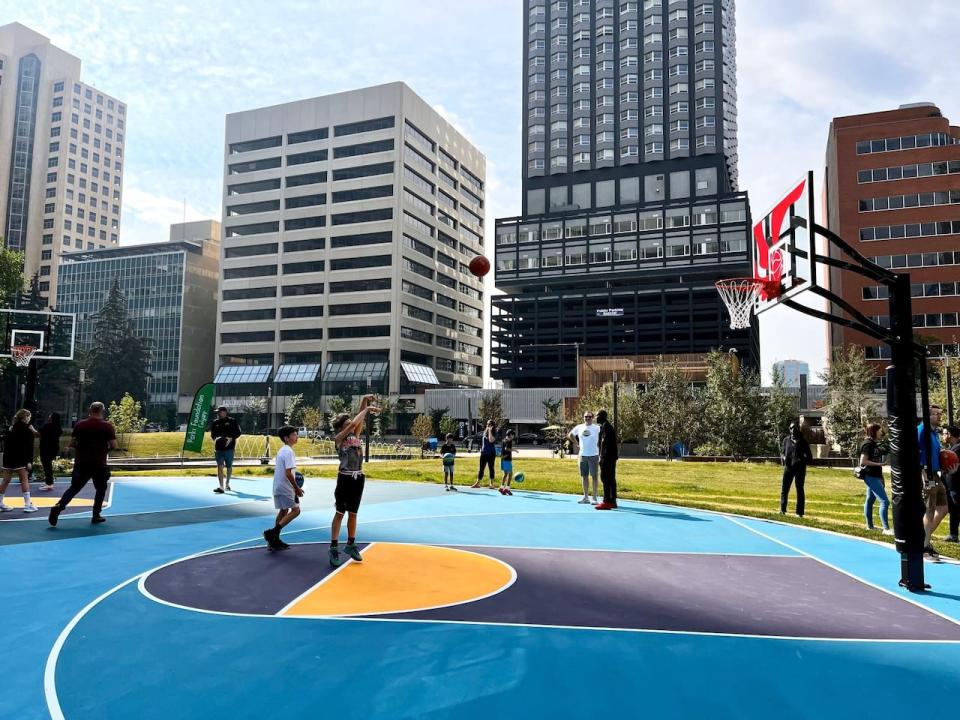Thousands will soon be moving into Calgary's converted office towers. What are they going to do there?

It is a staggeringly ambitious plan. Given the situation, it had to be.
When the economy started slumping in 2015, office vacancies in downtown Calgary began to climb. By 2020, the vacancy rate was sitting at over 30 per cent — about 14 million square feet of office space sat empty.
The value of office buildings in the city's core had plummeted by more than two-thirds over that period, gutting the city's property tax base and creating a revenue crisis at city hall.
Something had to be done.
That something turned out to be the city's Downtown Office Conversion Program, which set a goal of removing six million square feet of vacant office space by 2031 and increasing the downtown population by 20 per cent in the process.
With a start-up fund of $200 million — and a goal of investing $1 billion over the duration of the program — the city offered developers a sped-up approval process and, more importantly, $75 per square foot in incentives to convert empty office towers into residential apartment buildings.
To date, there are 17 conversion projects in the pipeline, 13 of which are active. These projects will result in the conversion of 2.3 million square feet of office space. Uptake of the program by developers has been so strong that the city announced a pause in October to secure additional funding to meet demand.
The success of the program has other Canadian cities looking to emulate it and generated international attention for its boldness.
Radical strategies
But without taking anything away from the grand ambitions of the Calgary plan, or the initial success it's seen (it isn't easy to convert one empty office block into apartments, let alone six million square feet worth), there are a few questions that need to be asked on behalf of the future residents of the 2,300-plus new homes about to be built. For example: What are they going to do there?
Where will they buy their groceries or meet friends for a coffee? Where will their children go to school?
When they step out the front door on a weekend morning, staring down the empty, cavernous expanse of Sixth Avenue, or Fifth Avenue, or Fourth Avenue, where will they direct their feet? (And if your answer was — like the line in the song — "to the sunny side of the street," you haven't spent much time in downtown Calgary.)
Beverly Sandalack is a professor at the University of Calgary's School of Architecture, Planning and Landscape, and she's a co-director of the university's Urban Lab.
Sandalack says that, starting in the mid-1960s, a massive amount of effort, planning and money went into changing the form and function of Calgary's downtown. Eventually, it lost its human scale, residential population, vitality, sense of safety, and most of its sunshine. An equal amount of effort, she says, will be required to turn it back into neighbourhoods once again.
"Improving the downtown will require radical strategies," Sandalack said.

Saturday morning on Eighth Street S.W. Downtown resident Paul Fairie says sometimes the city core can feel like an 'ambiguous, empty space.' (Jim Brown/CBC)
So, what radical strategies are the city contemplating?
"Maybe radical is not the right word to use, but the public that's moving into the downtown is different than the public that was there," said Thom Mahler, the director of the city's downtown strategy.
Mahler says the Greater Downtown Plan, approved by city council in 2021, provides a variety of options to turn the downtown back into more of a neighbourhood-focused place, removing some of the historical emphasis on the business function of the core.
That includes changes to everything from streets to public spaces and other civic amenities.
Making changes to downtown streets, particularly the wide, one-way avenues that bisect the city from east to west and essentially create an after-hours dead zone between Eighth Avenue in the south, and the Bow River to the north, will be a priority, said Mahler.
"What do you do long-term with Fourth, Fifth, Sixth Avenue? Ninth Avenue? Those are the four biggies," he said.
"How do you reimagine what those can be in the future?"
Something that makes this easier, he says, is the realization that those streets no longer need to do the things they did in the past, when everyone came downtown at the same time, and left together, resulting in incredible peak-traffic volumes.
"With the change in the way people work, we typically now only have a peak on maybe Tuesday, Wednesday, Thursday. But even then, people don't all arrive at the same time and leave at the same time as they used to," said Mahler.
Flexible streets
The city is now assessing just how much of that extra-wide pavement is required to meet the new demands.
"Where that settles, you can start taking bits away and adding to the public spaces for those other types of mobility, like bicycles, better transit facilities, but also programming lanes of traffic that aren't used during peak times," he said.
One of the options being considered is flexible streets.
"So, maybe we use a lane of traffic during the day, or certain days of the week, but other days of the week it can actually be repurposed for temporary parks or for hospitality patios," said Mahler.
Sandalack agrees that something needs to be done about the one-way, east-west avenues.
"They've completely screwed up the function of that part of the city as an urban area," she said. "It transforms it into freeways, and there's real difficulty trying to insert a neighbourhood back into that. So structurally and functionally, they're really a problem."
But she doesn't believe reimagining uses for lanes of traffic goes nearly far enough. She calls it "tinkering."
"All that tinkering, it's like coming across somebody who's got a few broken bones … you don't just buy them new clothes," she said.
"When I think about something really radical, an option has to be: do we tear down most of it and start again? To me, that has to be on the table as an extreme option."

A massive amount of effort, planning and money went into changing the form and function of Calgary’s downtown. An equal amount of effort will be required to turn it back into neighbourhoods once again. (Jim Brown/CBC)
Paul Fairie, the principal co-ordinator of the Downtown Core Neighbourhood Association, also thinks something needs to be done about the big, empty east-west avenues, particularly on the weekends.
"You wind up walking one or two blocks in a row with literally nothing. You're just walking in this ambiguous, empty space," Fairie said.
But as a downtown resident for 14 years, he says the items at the top of his wish list are what he calls "the boring things."
Things like grocery stores, inexpensive restaurants and coffee shops that stay open after 6 p.m.
"A big misconception is, they think, you live downtown, you're living this sort of glamorous, exotic, party-oriented lifestyle. No. I'm just living in an apartment. It's a relatively normal life and the more we can do to facilitate that, I think, the better," he said.
"Normal places are the priorities for me."
Mahler says most of the items on Paul Fairies's list will be left to the private sector, but he adds that, while the city doesn't require those kinds of commitments from the developers involved in the office building conversions, those developers understand the need for those amenities to convince someone to sign a lease. So the city is seeing developers planning for businesses like coffee shops, either on street level or on the second level of the buildings they are retrofitting.
Hotels and students
He says another important piece in creating amenities is that one of the office blocks in the west end of downtown is being converted into a hotel.
"The advantage of having hotels in the west end of downtown is hotels are active all the time and they typically have restaurants that are supported," he said.
On top of that, Mahler says the city is seeing a lot of interest from post-secondary institutions to move some of their space downtown, and create student housing.
"That's a whole demographic we've never had. And they will drive those public amenities. That's the coffee shops. That's the pubs. That's the more-affordable restaurant options," he said.
For Sandalack, the everyday urbanism that Paul Fairie talks about — the coffee shops, dry cleaners, daycare centres and so on — can't happen if the interaction between buildings and streets is wrong, as it is in most of downtown Calgary.
"The buildings have blank walls and very few entries. The sidewalk — the public realm itself — is terrible, so that interface needs to be addressed, and not just in front of one building," she said.
"So, if you have a residential conversion, and you make it nice in front of the residential conversion, that's not enough because it needs to be a people-on-the-street kind of place with people walking around and going to different locations."

Downtown Core Neighbourhood Association co-ordinator Paul Fairie says the new Century Gardens Sports Court has been 'amazing.' Thom Mahler, the director of the city’s downtown strategy, says the city is looking at diversified uses for vacant lots and for the many city-owned surface parking lots in the core. (Parks Foundation Calgary)
Another missing piece in the downtown puzzle is amenities geared toward children and teenagers, something that will only be more glaring when the office conversion projects begin to fill up.
According to the city, over 800 children under the age of 14 were living in the downtown core in 2021. Add in the older teens and Fairie says there is a real need for schools and places for young people to hang out.
Mahler acknowledges that elementary and high schools are an issue, since the existing schools surrounding the downtown are all overcapacity.
"It's a conversation we will be having with schools … private schools, public schools … about additional school capacity within the downtown. I think there's some interest starting to happen in doing that," he said.
Fairie says he has high hopes for the office conversion program and the downtown revitalization plans generally. He says he's already seeing improvements, and points to the new sports park next to Century Gardens as an example.
"That basketball court has been amazing," he said. "It's full a lot of the day. You see young people — meaning teenagers — in downtown doing stuff, and that's great, that sort of activation of spaces like that."
Rethinking parking lots
Mahler says the city is looking at diversified uses for other vacant lots, like the one next to Century Gardens, and for the many city-owned surface parking lots in the core.
Parking Lot 6, for example, in the west end near the Louise Bridge, has been used for festivals and events over the past couple of years.
"The more we pilot these different kinds of things, it lets us get a sense of which ones are the best ones, what's really resonating with the local population. And then we can make more permanent plans for permanent investment in some of those spaces," Mahler said.
Beverly Sandalack says she appreciates the work Thom Mahler and others at the city are doing.
"I think those are all really good ideas … necessary," she said.
But, returning to her point about the difference between radical change and tinkering, she says it's not enough.
"We're trying to remediate what went wrong during that … dismal period. And it's really, really hard to fix the things that have gone wrong because it costs so much money and the problems are so, so big."
That doesn't mean we shouldn't try, she says.
"There are things that need to be undone, before you can get a city back."


